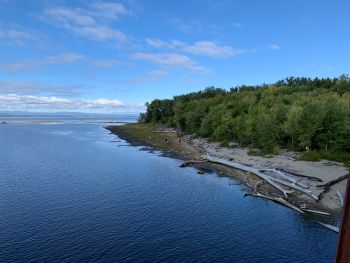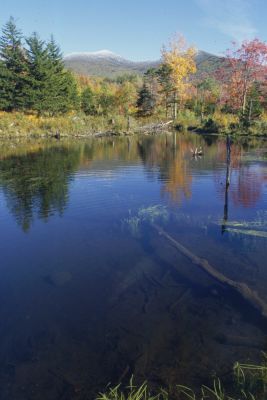
_____________________________________________ _____________________________________________
2021 Edition: Association of Vermont Conservation Commissions
1998 Edition: Virginia J. Rasch
Illustration: Libby Walker Davidson
_____________________________________________ _____________________________________________
- ACKNOWLEDGMENTS
- FOREWORD
- CASE STUDIES
- Chapter 1 Introduction,
- Chapter 2 STARTING AND BUILDING A CONSERVATION COMMISSION,
- Chapter 3 BASIC NUTS AND BOLTS OF COMMISSION WORK,
- Chapter 4 SETTING PRIORITIES AND ACHIEVING GOALS,
- Chapter 5 COMMUNICATION AND ENGAGEMENT,
- Chapter 6 COMMISSIONS WORK IN A LARGER CONTEXT,
- Chapter 7 HOW TO PAY FOR CONSERVATION
Handbook as a single printable PDF
ACKNOWLEDGMENTS
The Association of Vermont Conservation Commissions (AVCC) gratefully acknowledges the work of Andy Wood & Jens Hilke from Vermont Fish & Wildlife Department’s Community Wildlife Program in helping make this second version of the handbook become a reality.
The first draft of this handbook relied heavily on similar handbooks from Connecticut, Maine, Massachusetts, New Hampshire, New Jersey, and New York. AVCC appreciates the generosity of those states in extending their help and support.
Special thanks to members of the Board of Directors of AVCC: Mark Nelson, Stephanie Gomory, Nancy Jones, Rebecca Roman, Suma Lashoff, Matt lacey, Bill Dell’Isola, Robert Hyams & Jens Hilke.
Special thanks to all the authors of conservation success stories. This work is featured as case studies throughout the document.
AVCC also acknowledges and honors Vermont’s dedicated conservation commissioners -the individuals who sow seeds for Vermont’s future. Through grassroots stewardship of their town’s natural and cultural resources, conservation commissions work for the health and survival of the natural world we all depend on.
FOREWORD
Town conservation commissions play a vital role in the interconnected web of partners that make conservation happen in Vermont. These dedicated volunteers are the “boots on the ground” folks who know their own communities – both the land and the people – the best. Local conservation commissions help assess natural and cultural resources in their communities. They provide education and learning opportunities about the environment to interested members of the public. Conservation commissions also help towns acquire, protect, manage and/or steward properties important to their communities. The Association of Vermont Conservation Commissions is the glue that brings these town-level groups of volunteers together, providing support and resources so that local commissions can achieve their goals.
This updated handbook is a wonderful and much-needed how-to manual for existing conservation commissions, and for those interested in forming a new commission in their town. The handbook provides comprehensive information about how to form, operate, fund, and achieve success as a conservation commission, within the context of the broader conservation goals and landscape of the state. The numerous case studies and success stories included further demonstrate the varied ways that committed, local volunteers have made a difference in their towns.
The lockdowns and social distancing required by the COVID-19 pandemic have highlighted the importance of safe, local conservation areas accessible and available to the public for dispersed outdoor recreation. And with each passing year, we feel the growing impact of our changing climate, reinforcing the critical importance of protecting the rivers, wetlands, forests and meadows that provide such myriad benefits to all of us: wildlife habitat, carbon sequestration, clean water and air, to name just a few. Conservation has never felt more urgent – and this handbook will help inspire and support the people who help make it happen. As Margaret Mead so famously said: Never doubt that a small group of thoughtful committed citizens can change the world: indeed it’s the only thing that ever has.
Nancy Everhart
Former AVCC Board Chair
September 2021
TABLE OF CONTENTS
- CASE STUDIES
- CHAPTER 1: INTRODUCTION
- CHAPTER 2: STARTING AND BUILDING A CONSERVATION COMMISSION
- 2-1 The Enabling Legislation
- 2-2 Proposing a Conservation Commission
- 2-3 Voting to Form a Conservation Commission
- 2-4 Why Do Conservation Commissioners Volunteer?
- 2-5 Appointing Members
- 2-6 Educating members
- 2-7 Removing Members
- 2-8 Incompatible Offices
- 2-9 Dissolving a Conservation Commission
- 2-10 Commission versus Committee
- 2-11 Sample Petition to Create a Conservation Commission
- CHAPTER 3: BASIC NUTS AND BOLTS OF COMMISSION WORK
- CHAPTER 4: SETTING PRIORITIES AND ACHIEVING GOALS
- CHAPTER 5: COMMUNICATION AND ENGAGEMENT
- CHAPTER 6: COMMISSIONS WORK IN A LARGER CONTEXT
- CHAPTER 7: HOW TO PAY FOR CONSERVATION
- APPENDIX A: SAMPLE RULES FOR MUNICIPAL CONSERVATION COMMISSIONS IN VERMONT
CASE STUDIES
These Link to AVCC’s Success Stories
- Creation of the Granville Conservation Commission.
- Formation of the Montgomery Conservation Commission.
- Arrowwood Inventory of Fayston, Warren, and Waitsfield: Natural Community Mapping.
- Bolton Floodplain Inventory.
- Missisquoi River Basin Association Tree Planting Program.
- Volunteer Recruitment for Invasive Species Control
- Sullivan Education Woods Monthly Walks.
- Sue Morse presents “Animals of the North: What Will Global Climate Change Mean for Them?”
- Ash Tree Awareness Week 2014.
- Lamoille River Paddlers’ Trail
- Bat Houses Building Project.
- The Creation of the Lowell Community Nature Trail
- Community Value Mapping in the Northern Green Mountains.
- St. Albans Main Street Revitalization.
- Crown Jewel Walks.
- Nulheganaki Tribal Forest
- Plainfield Town Plan Update.
- Buildout Analysis in Calais by CVRPC.
- A Place in Between
- Brushwood Community Forest.
- Dummerston Biodiversity Inventory Report.
- Charlotte Significant Wildlife Map and Database.
- Tiered Ecological Communities Map – From Science to Planning.
- Burke Natural Resources Overlay District.
- Developing a Wilderness Trail in our Town Forest.
- Montpelier Invasive Species Control and Education Project.
- Charlotte WatershED.
- Woodbury’s Natural History Publication, Our Town: Introduction to Natural History.
- Burlington Climate Action Plan.
- Richmond Conservation Reserve Fund.
- Orange County Headwaters Project (OCHP).
- Cornwall Conservation Fund Appropriation Approved by 86% of Voters.
- Weeks Forest Carriage Trail
- Journey’s End in Johnson.
- Warren’s Conservation Reserve Fund
- Conservation of Zack Woods.



